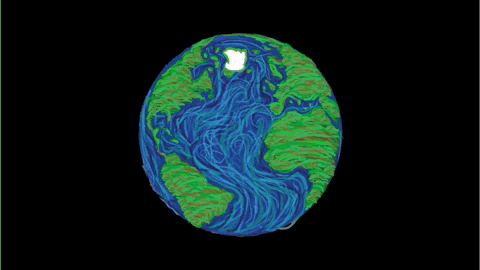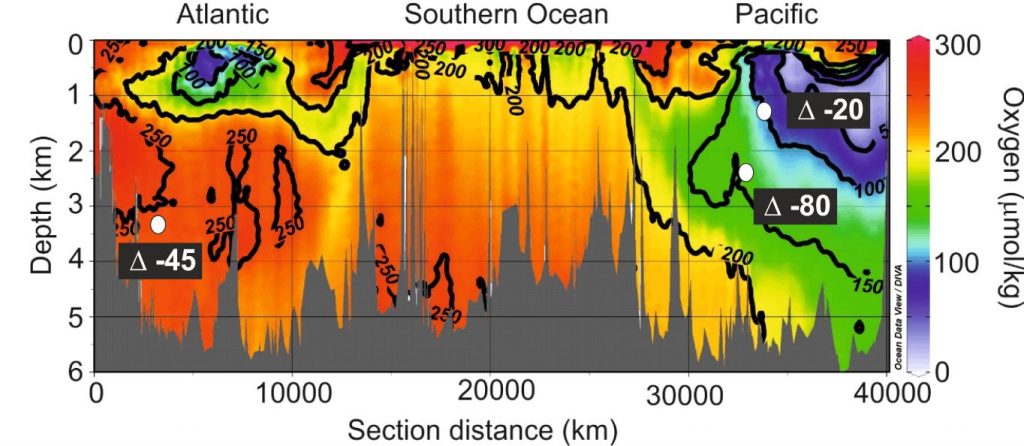
Over the course of the Quaternary period (e.g. last 2,600,000 million years) earth has experienced multiple ice ages. The growth of large land-based ice sheets on the North American and North Eurasian continents during these cool periods caused a global decrease in sea-level by circa 100 meters, exposing previously submerged seabeds. For example, large swathes of the North Sea were exposed linking Great Britain directly to Northern Europe.
Ocean circulation changed during ice ages, causing the ‘sequestration’ of large amounts of carbon in the deep ocean. The organic carbon and oxygen cycles are intimately linked: photosynthesis, the production of organic algal material, takes up carbon dioxide and produces oxygen; whilst the decay of organic material uses oxygen and creates carbon dioxide.
It has therefore been suggested that the large increase of accumulated decayed organic material in the deep ocean would have been accompanied by a reduction in its’ oxygen content.
Using recently developed seawater oxygen ‘proxy’ methods we tested this hypothesis in parts of the Atlantic and Pacific Oceans. Our results (Hoogakker et al., 2015 & 2018) confirm that bottom water oxygen concentrations in the North Atlantic and tropical Pacific, were significantly reduced.

Helge is currently working on sediment cores from the North Pacific to decipher how seawater oxygen concentrations have changed in this region and will compare this with the tropical Pacific.
